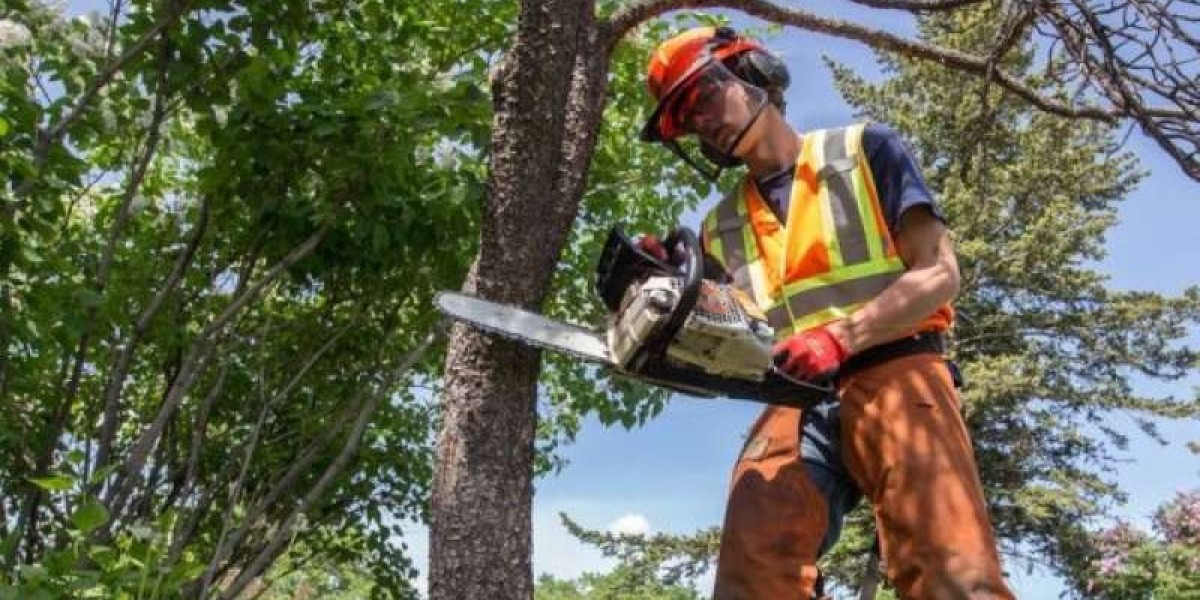So, you've got a tree that’s become more of a headache than a highlight in your yard. Maybe it’s leaning, rotting, or just too close to your home for comfort. No matter the reason, tree removal is sometimes the best (and safest) choice.
But tree removal isn’t something to jump into without knowing the facts. Let’s explore when, why, and how to do it right.
Why Tree Removal Isn’t Always a Bad Thing
We all love trees. They provide shade, clean the air, and boost your home’s value. But sometimes, removing a tree is the smartest thing you can do for your property’s safety, beauty, and health.
Whether it's diseased, dead, or just growing in the wrong place—removal can help prevent damage and open up space for new landscaping possibilities.
Common Reasons for Tree Removal
Tree is dead or decaying
Roots are damaging foundations or plumbing
Tree is a storm risk or leaning dangerously
It’s blocking sunlight or growing too close to power lines
It's infested with pests or infected by disease
Signs You Need to Remove a Tree
The Tree Is Dead or Dying
If the tree has no leaves during peak season or brittle branches snap off easily, it’s probably beyond saving.
It’s Damaging Property or Infrastructure
Roots can crack sidewalks, foundations, and underground pipes. Overhanging limbs can scrape roofs or power lines.
Overcrowding and Poor Location
Sometimes trees are planted too close together or in a spot they simply outgrow. This leads to competition for light and water—or worse, structural issues.
Storm Damage and Leaning Trees
Has a recent storm left your tree listing to one side or split the trunk? It’s time to act before it falls.
Pest Infestation or Disease
Signs like fungus, hollow trunks, or visible bugs are red flags that your tree might be a hazard.
The Tree Removal Process
Initial Tree Inspection
A professional arborist will assess the tree’s health, stability, and risk level before deciding how to proceed.
Getting Permits (If Needed)
Depending on your city or HOA rules, you may need permission before cutting down any tree—especially large or protected species.
Equipment Used in Tree Removal
Chainsaws
Ropes and harnesses
Cranes or bucket trucks (for large trees)
Wood chippers
Cutting the Tree Down Safely
The crew typically removes limbs first, then sections the trunk in manageable pieces, working from the top down.
Clean-Up and Disposal
Reputable companies will handle all cleanup and debris removal—some even leave you with firewood or mulch if you want it.
DIY Tree Removal vs. Hiring a Pro
What You Can Legally and Safely Do Yourself
Small trees (under 10 feet) can often be cut down with a chainsaw and safety gear—if you know what you’re doing.
Why Hiring a Professional Tree Removal Service Makes Sense
Certified arborists know how to do it safely
They’re insured in case of damage or injury
They have the equipment to handle large or risky trees
Risks of DIY Tree Removal
Falling branches or entire tree collapse
Damage to your home, car, or neighbor’s yard
Serious injuries, especially from chainsaws or falls
Cost of Tree Removal
Factors That Affect Cost
Tree height and width
Location and accessibility
Tree condition (dead or diseased trees are riskier)
Local labor rates
Whether you want stump grinding included
Average Price Ranges
Small trees: $150–$400
Medium trees: $400–$1,000
Large trees: $1,000–$3,000+
Hidden Fees to Watch Out For
Stump grinding (often extra)
Emergency fees (for storm damage)
Crane rental or difficult access fees
Environmental Impact
When It’s Environmentally Responsible to Remove a Tree
Sometimes, it’s better for surrounding plants and wildlife to remove an invasive or dying tree.
Replanting and Replacing Trees
Consider replacing the removed tree with a native species that thrives in your area. It helps maintain balance and beauty in your yard.
What Happens After Tree Removal?
Stump Grinding vs. Stump Removal
Grinding is faster and cheaper, leaving wood chips.
Removal gets rid of the entire root ball but is more invasive.
Root Decay and Soil Restoration
After removal, roots slowly decay underground. You can plant grass or flowers over the area once it settles.
Landscaping the Area
Think of tree removal as a chance to upgrade your yard—new garden bed, patio, or even a fresh tree!
Conclusion
Tree removal isn’t just about chopping down wood—it’s about protecting your home, your family, and your property’s future. Whether your tree is dying, dangerous, or just poorly placed, taking action now can save you big headaches later.
And remember: this isn’t always a DIY project. Calling a pro can make all the difference between a smooth job and a stressful disaster.
FAQs
1. Do I need permission to remove a tree on my property?
In many areas, yes—especially if the tree is large or protected. Always check with your local municipality or HOA.
2. How long does it take to remove a tree?
It depends on the tree’s size and complexity. Most removals take between 2 to 8 hours, but large or risky trees may take longer.
3. Is it cheaper to remove a tree in winter?
Yes! Tree removal companies often have lower demand in the winter, which means better pricing for you.
4. Will removing a tree affect my property value?
If the tree was healthy and attractive—possibly. But if it was diseased, dead, or dangerous, removal can actually increase your property’s appeal.
5. What’s the safest way to remove a tree?
Hire a certified, insured professional. Don’t take chances with heavy limbs, chainsaws, or power lines.






